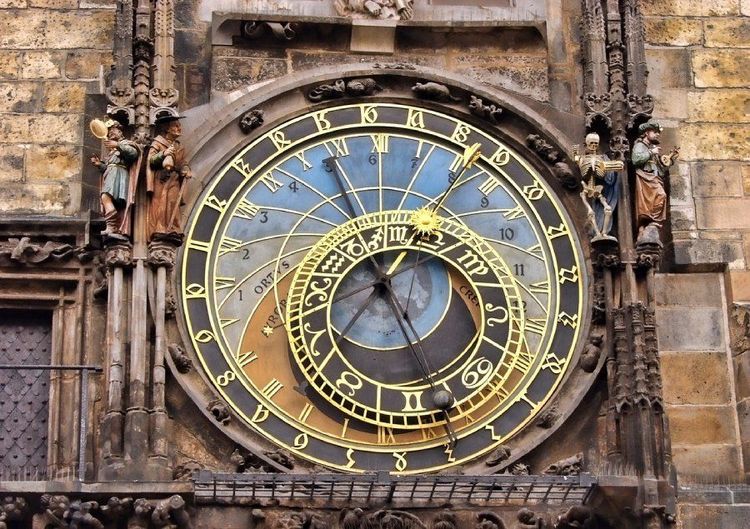Prague Astronomical Clock

Prague Astronomical Clock: A Marvel of Medieval Engineering
The Prague Astronomical Clock, known as the Orloj, is one of the most iconic and intricate timepieces in the world. Located on the southern wall of the Old Town Hall in Prague’s Old Town Square, this medieval clock is a testament to the city’s rich history and engineering prowess. With its complex mechanism, stunning design, and captivating hourly show, the Prague Astronomical Clock continues to fascinate visitors from around the globe.
History of the Prague Astronomical Clock
The history of the Prague Astronomical Clock dates back to the early 15th century. The clock was initially installed in 1410 by clockmaker Mikuláš of Kadaň and mathematician Jan Šindel. It is the third-oldest astronomical clock in the world and the oldest one still in operation.
Over the centuries, the clock has undergone several renovations and additions. In 1490, the calendar dial was added, and wooden statues were installed. The most significant modifications occurred in the 17th century when the statues of the Apostles were added. Despite periods of neglect and damage, including during World War II, the clock has been meticulously restored to preserve its historical and cultural significance.
Design and Mechanism
The Prague Astronomical Clock is a marvel of medieval engineering, comprising three main components: the astronomical dial, the calendar dial, and the animated figures.
1. Astronomical Dial
The astronomical dial is the oldest and most complex part of the clock. It represents the position of the Sun and Moon in the sky, displaying various astronomical details. The outer ring shows the 24-hour time format, while the inner rings indicate Central European, Old Czech, and Babylonian time. The zodiacal ring represents the position of the Sun within the zodiac. The central part of the dial features a golden Sun, a silver Moon, and an Earth symbol, providing a geocentric view of the universe.
2. Calendar Dial
The calendar dial, added in 1490, displays the day, month, and zodiac sign. The outer ring features medallions representing the 12 months, each illustrated with a typical rural scene from medieval times. The central disk rotates once a year, providing a visual representation of the passage of time.
3. Animated Figures
One of the most enchanting aspects of the Prague Astronomical Clock is its hourly show, featuring animated figures. On the hour, the statues of the Twelve Apostles appear in the two windows above the astronomical dial. Additionally, four figures flanking the clock come to life: Vanity (a figure admiring itself in a mirror), Greed (a miser holding a bag of gold), Death (a skeleton striking the time), and Lust (a Turk shaking his head). These figures symbolize the fears and desires of medieval society.
The Hourly Show
Every hour, crowds gather in front of the Old Town Hall to witness the mesmerizing show of the Prague Astronomical Clock. The performance begins with the skeleton (Death) pulling a cord, which sets the other figures in motion. The windows above the clock open, and the Twelve Apostles parade past, each turning to bless the onlookers. As the figures complete their march, a golden rooster crows, and the clock chimes, marking the passage of another hour.
Restoration and Preservation
Throughout its long history, the Prague Astronomical Clock has faced numerous challenges, including mechanical failures, weathering, and damage during wartime. The most significant damage occurred during the Prague Uprising in 1945, when the Old Town Hall was set on fire. The clock was heavily damaged, and its restoration took several years to complete.
In recent decades, extensive restoration efforts have been undertaken to preserve the clock's functionality and appearance. In 2018, the clock was removed for a comprehensive restoration as part of the Old Town Hall's renovation. The restoration aimed to return the clock to its original medieval appearance, using historical methods and materials.
Visiting the Prague Astronomical Clock
The Prague Astronomical Clock is located in the Old Town Square, making it easily accessible to visitors. The hourly show is a must-see attraction, and it’s recommended to arrive a few minutes early to secure a good viewing spot.
For those interested in a closer look at the clock’s mechanism and history, guided tours of the Old Town Hall are available. These tours provide access to the interior of the building, including the clock tower, offering panoramic views of Prague.
Conclusion
The Prague Astronomical Clock is not just a timekeeping device; it is a masterpiece of art, science, and history. Its intricate design, astronomical functions, and animated figures make it a unique and captivating attraction. A visit to Prague is incomplete without witnessing the splendor of the Orloj, a true symbol of the city's enduring legacy and innovation. Whether you are a history enthusiast, an astronomy lover, or simply a curious traveler, the Prague Astronomical Clock offers an unforgettable glimpse into the medieval world of timekeeping and craftsmanship.